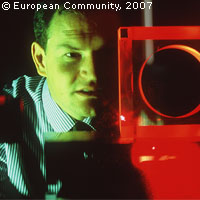Survey identifies nanotech skills gaps
Training in research management and toxicology, interdisciplinary Masters level programmes and hands-on training experience are some of the recommendations from the Institute of Nanotechnology following a survey identifying the skills gaps and training needs in nanoscience and nanotechnology. The survey was carried out as part of the EU-funded NANOFORUM project, and received responses from research managers at government institutions, not-for-profit bodies and companies. Some 57.1% of respondents claimed to recruit graduates and post-graduates specifically for their nanotechnology know-how, while 23.5% indicated a preference for generalist skills and 12.5% for specialists. Management of research and development (R&D) was identified as the most important technical competence. The Institute of Nanotechnology therefore recommends training for nanoscience and nanotechnology postgraduates in managing research within industry and academia. Short training courses and training programmes are also recommended in the following areas: customer interfacing roles such as technical support; toxicology; health and the safety of nanoparticles; the strategic application of intellectual property rights; policy issues. The Institute of Nanotechnology also recommends the establishment of interdisciplinary Masters level programmes that provide a grounding in material science, the nano-biology interface, nanoscale effects and selected modules from chemistry. In addition to these extra courses, the paper also recommends that students be required to carry out hands-on training during their studies. This training should cover fabrication and synthesis techniques as well as characterisation equipment. Partnerships between industry and academia should be strengthened with the creation of more 'science to business roles', which should be supported with increased funding from government bodies. A total of 240 responses to the survey were received, of which 61.2% were valid. Some 64% of the valid responses came from organisations with headquarters in Europe, 21% from Asia, 8% from North America and 7% from the rest of the world.



